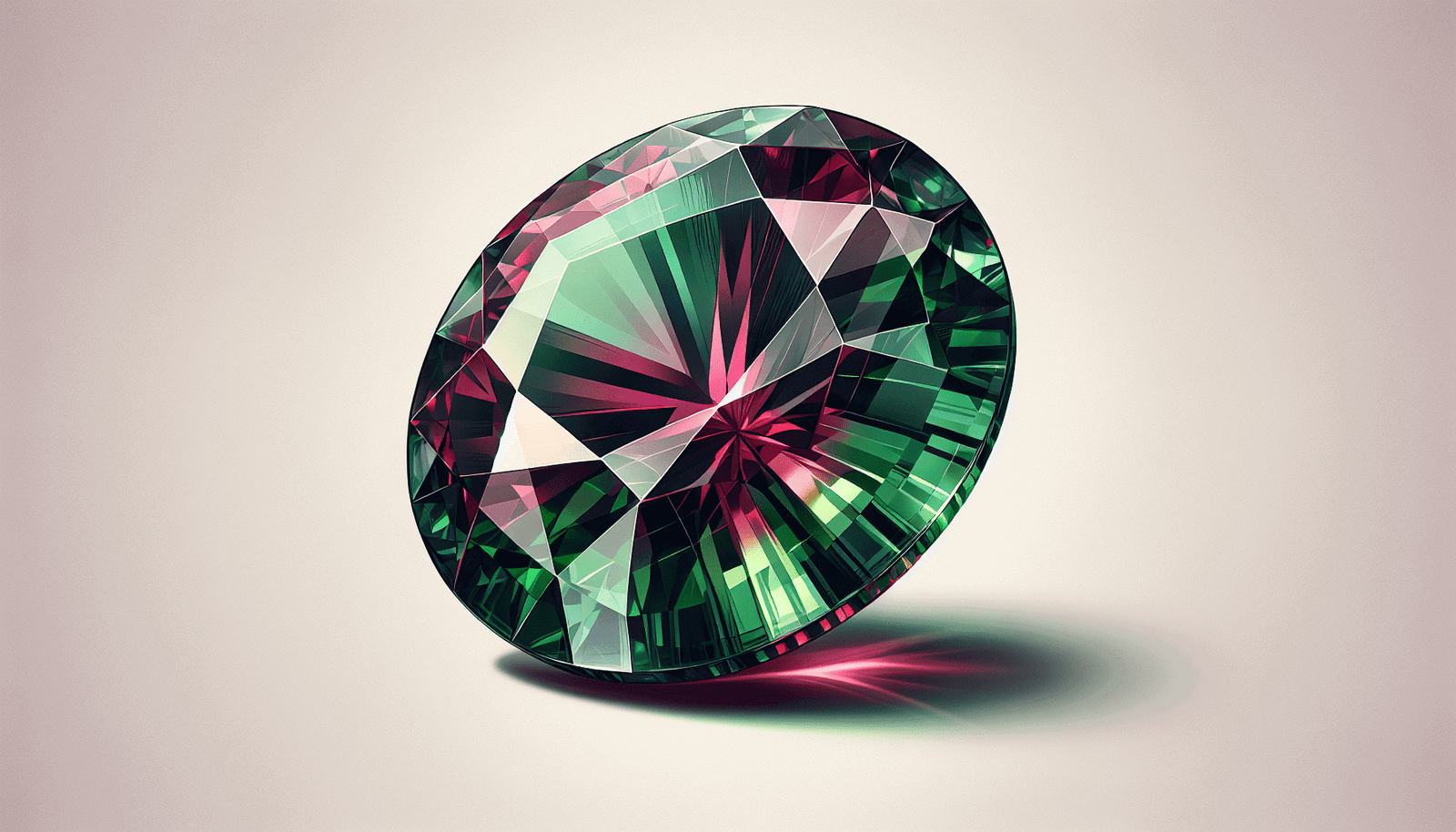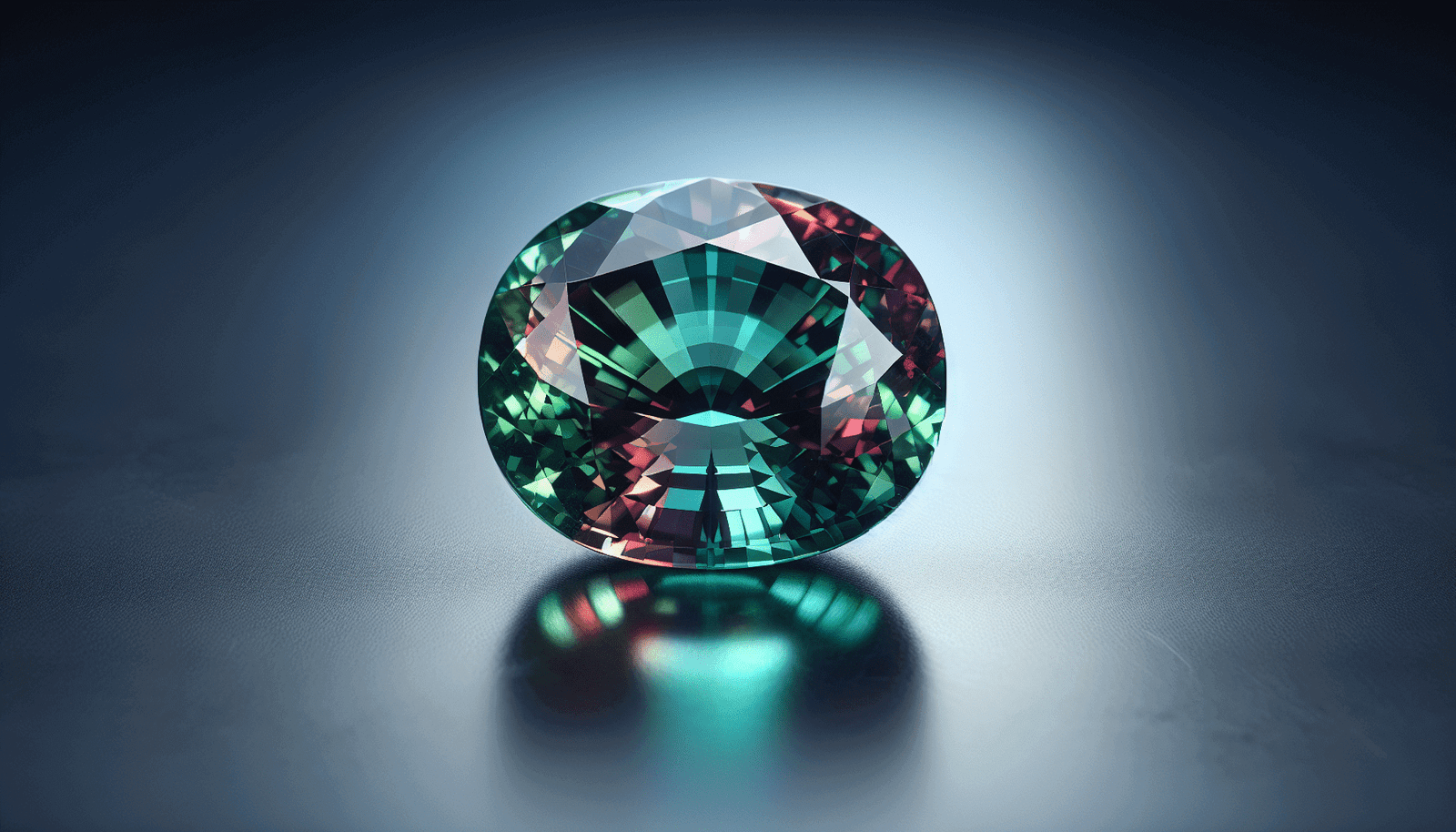In the world of gemstones, alexandrite stands out with its unique ability to change colors in different lighting, a characteristic that has fascinated gem lovers for centuries. “Why Is Alexandrite So Expensive?” dives into the rarity of this captivating gem, explaining the geological processes that make it so hard to find. You will also discover how its mesmerizing color change and overall quality contribute to its high value. Through this engaging read, you’ll gain a clearer understanding of what makes alexandrite not just a beautiful stone, but a true treasure worth its price. Have you ever wondered why alexandrite costs so much? If you’ve been pondering this question, you’re not alone. Many gemstone enthusiasts, collectors, and even casual observers often find themselves fascinated and perplexed by the high prices associated with alexandrite. Let’s dive deep into this intriguing gemstone to uncover the reasons behind its significant cost.

What is Alexandrite?
Alexandrite is a variety of the mineral chrysoberyl, which is renowned for its remarkable color-changing properties. Unlike other gemstones, alexandrite can appear different colors under different lighting conditions, shifting from a greenish hue in daylight or fluorescent light to a reddish or purplish tone under incandescent or candlelight.
History of Alexandrite
The fascinating story of alexandrite begins in 1830. It was discovered in the Ural Mountains of Russia and named in honor of Alexander II, who was then the future Tsar of Russia. With its colors mirroring the red and green of the Russian Imperial Guard, alexandrite quickly gained popularity in Russian culture and beyond.
Unique Color-Changing Ability
The ability of alexandrite to change colors makes it one of the most unique and coveted gemstones in the world. This phenomenon, known as the “alexandrite effect,” is due to the complex way the mineral absorbs light. The presence of chromium in its structure allows it to absorb different wavelengths of light, resulting in its dual-color nature.
Factors Contributing to Alexandrite’s High Cost
Several key factors contribute to the high price of alexandrite. Let’s explore each factor in detail:
Rarity
One of the primary reasons why alexandrite is so expensive is its rarity. Natural alexandrite is extremely scarce, with significant deposits originally found mainly in Russia. Over the years, the depletion of these deposits has made the gemstone even rarer. While smaller deposits have been discovered in places like Brazil, Sri Lanka, and East Africa, they don’t match the quality or quantity of the original Russian sources.
Mining Challenges
The process of mining alexandrite is fraught with difficulties. Extracting high-quality alexandrite from the Earth requires specialized knowledge, advanced equipment, and often a significant amount of labor. Miners must painstakingly search for veins of chrysoberyl that contain alexandrite, and even then, the yield might not be significant. The challenging mining process adds to the overall cost of this gemstone.
Quality and Grading
Not all alexandrite is created equal. The value of an alexandrite gemstone is heavily influenced by its color, clarity, and size.
Color
The most prized alexandrites show a stunning and distinct color change, shifting from a vibrant green or blue-green in daylight to a rich red or purplish-red under incandescent light. The more pronounced and striking the color change, the more valuable the gemstone.
Clarity
Like other gemstones, alexandrite is evaluated based on its clarity. Gemstones with fewer inclusions or flaws fetch higher prices. However, given the rarity of alexandrite, minor inclusions are often considered acceptable.
Size
Large alexandrite stones of high quality are especially rare and can command astronomical prices. Small, high-quality stones are still valuable, but the price per carat increases significantly with size.
Market Demand
The market demand for alexandrite also plays a crucial role in its pricing. As a gemstone with unique and desirable properties, alexandrite has always been in high demand among collectors and enthusiasts. This demand, coupled with its limited supply, drives up the cost.

Synthetic Alexandrite
Given the high cost of natural alexandrite, synthetic alternatives have been developed. These lab-created stones can show similar color-changing properties but at a fraction of the cost. While synthetic alexandrite provides a more affordable option, it doesn’t possess the natural allure or investment potential of a genuine stone.
Distinguishing Natural from Synthetic
For buyers, distinguishing between natural and synthetic alexandrite is crucial. Gemologists can perform various tests to verify the authenticity of a stone, examining factors such as inclusion patterns and chemical composition.
| Criteria | Natural Alexandrite | Synthetic Alexandrite |
|---|---|---|
| Color Change | Natural and often subtle | Can be dramatic and overly perfect |
| Inclusions | May have natural inclusions | Generally cleaner with synthetic indicators |
| Price | High | More affordable |
| Origin | Earth mines | Laboratory |
| Investment Value | High | Low |
Alexandrite in Jewelry
Alexandrite’s fascinating color-changing ability makes it an exceptional choice for jewelry. Whether set in rings, pendants, or earrings, alexandrite’s unique visual properties make it a standout gemstone.
Custom vs. Commercial Jewelry
Custom-made alexandrite jewelry often commands higher prices due to the bespoke craftsmanship and the quality of the gem used. Commercially produced pieces, while still valuable, might not have the same level of detail or quality.
Care and Handling
Owning alexandrite jewelry comes with the responsibility of proper care. It’s a relatively hard gemstone, ranking 8.5 on the Mohs scale, yet it’s still essential to handle it with care to avoid scratches and damage. Regular cleaning and occasional professional check-ups can help maintain its beauty and value.

Investment Potential
Due to its rarity and unique properties, alexandrite holds significant investment potential. As natural sources dwindle and demand remains high, the value of quality alexandrite can appreciate over time.
Historical Price Trends
Historically, the price of alexandrite has shown a steady increase. Collectors and investors often look at past trends to gauge future potential.
Factors Affecting Future Prices
Several factors can influence the future prices of alexandrite, including:
- New Discoveries: Any significant new finds of high-quality alexandrite could affect prices, though such discoveries are increasingly rare.
- Market Trends: Fluctuations in the global economy and changes in consumer preferences can impact gemstone prices.
- Technological Advances: Improvements in synthetic gem creation could influence the market for natural alexandrite.
Evaluating Alexandrite for Purchase
When considering purchasing alexandrite, it’s essential to evaluate several aspects to ensure you’re making a wise investment.
Certification and Authenticity
Always request a certification from a reputable gemological laboratory. This certificate will confirm the gemstone’s authenticity, origin, and other critical attributes.
Dealer Reputation
Purchasing from a well-known and respected dealer can provide assurance of quality and authenticity. Research and reviews can help you choose a dealer with a solid reputation.
Personal Preferences
Ultimately, the best alexandrite for you is one that you find visually and emotionally appealing. Trust your instincts and choose a stone that resonates with you.
The Cultural and Symbolic Significance of Alexandrite
Beyond its physical allure, alexandrite carries cultural and symbolic significance. In folklore, it’s often associated with balance, self-control, and prosperity.
Birthstone and Anniversary Gem
Alexandrite is the birthstone for June and is traditionally given for 55th wedding anniversaries. Its dual nature symbolically represents duality and change, fitting for life’s evolving journey.
Healing and Metaphysical Properties
Some believe that alexandrite has healing properties, promoting emotional balance and confidence. While there’s no scientific backing for such claims, many find personal significance in these beliefs.
Future of Alexandrite
With its unique properties and enduring allure, the future of alexandrite remains bright. As natural sources continue to dwindle, we can expect this gemstone to become even more coveted and valuable.
Advances in Technology
Future technological advancements might allow for more accurate simulations of natural alexandrite, broadening accessibility without diminishing the value of genuine stones.
Role in Modern Jewelry Design
Modern jewelry designers continue to find innovative ways to showcase alexandrite’s unique beauty, ensuring its ongoing popularity and relevance.
By now, you should have a clearer understanding of why alexandrite is so expensive. Its rarity, distinctive color-changing ability, mining challenges, and high market demand conspire to make it one of the most precious gemstones available. Whether you’re a seasoned collector or a curious enthusiast, appreciating the complexity and beauty of alexandrite adds to its allure. Happy gemstone hunting!



